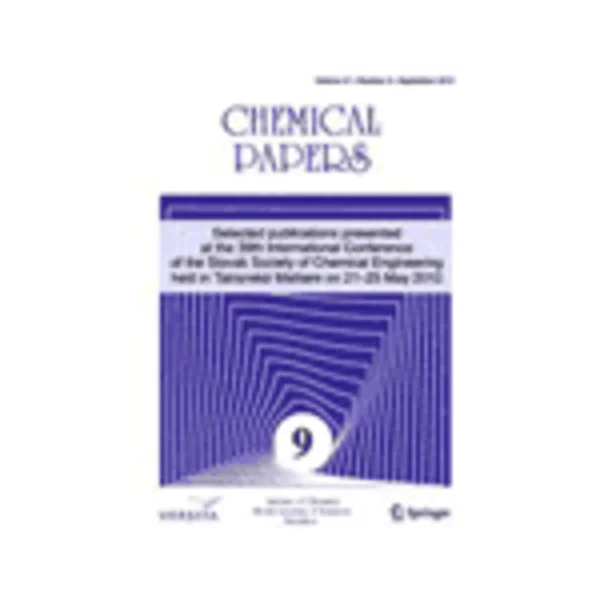-
zeolite and potting soil sorption of co2 and nh3 evolved during co-composting of grape and tobacco waste
جزئیات بیشتر مقاله- تاریخ ارائه: 1392/07/24
- تاریخ انتشار در تی پی بین: 1392/07/24
- تعداد بازدید: 979
- تعداد پرسش و پاسخ ها: 0
- شماره تماس دبیرخانه رویداد: -
the gaseous byproducts produced during the composting of different kinds of solid waste are carbon dioxide (co2) and ammonia (nh3). co2 is a greenhouse gas and nh3 is a toxic and corrosive air pollutant so, they must be removed from exhaust gases prior to release into the atmosphere. the purpose of this work was to investigate the sorption of co2 and nh3, evolved during composting, on zeolite and potting soil. the composting of the mixture of grape waste (gw) and tobacco waste (tw) in the mass ratio gw: tw = 55: 45 (dry mass basis) was carried out under forced aeration (0.645 l min−1 kg−1) in a column reactor (10 l) under adiabatic conditions over 21 days. adsorption of the gases evolved was carried out in the fixed-bed column reactor (0.166 l). the most important physical-chemical characteristics of the composting mass and adsorbents and the evolved co2 and nh3 were closely monitored. the highest co2 and nh3 concentrations were measured at the thermophilic stage and the cooling stage of composting, respectively. the results showed that zeolite and potting soil were good adsorbents for the sorption of co2 and nh3. the zeolite adsorbed 31 % of the evolved co2 and the entire concentration of ammonia, whilst the potting soil adsorbed 3 % of co2 and 49 % of nh3 from the exhaust gases.
مقالات جدیدترین رویدادها
-
استفاده از تحلیل اهمیت-عملکرد در ارائه الگوی مدیریت خلاقیت سازمانی و ارائه راهکار جهت بهبود
-
بررسی تاثیر ارزش وجوه نقد مازاد بر ساختار سرمایه شرکت های پذیرفته شده در بورس اوراق بهادار تهران
-
بررسی تأثیر سطح افشای ریسک بر قرارداد بدهی شرکت های پذیرفته شده در بورس اوراق بهادار تهران
-
بررسی تأثیر رتبه بندی اعتباری مبتنی بر مدل امتیاز بازار نوظهور بر نقد شوندگی سهام با تأکید بر خصوصی سازی شرکت ها
-
تأثیر آمیخته بازاریابی پوشاک ایرانی بر تصویر ذهنی مشتری پوشاک ایرانی (هاکوپیان)
-
اثر اشتغال مادران بر رفتارهای کودکان پیش دبستانی
-
بررسی مشکلات ژئوتکنیکی اجرای سازه سیفون معکوس کارون
-
بررسی رخساره ها و محیط رسوبی سازند داریان در حوضه رسوبی دزفول شمالی (چاه آب تیمور 32)
-
مقایسه امید به زندگی در مردان و زنان استان یزد در سال های 1375 و 1382
-
detection of high risk human papillomaviruses in esophageal squamous cell carcinoma by pcr and dna sequencing
مقالات جدیدترین ژورنال ها
-
مدیریت و بررسی افسردگی دانش آموزان دختر مقطع متوسطه دوم در دروان کرونا در شهرستان دزفول
-
مدیریت و بررسی خرد سیاسی در اندیشه ی فردوسی در ادب ایران
-
واکاوی و مدیریت توصیفی قلمدان(جاکلیدی)ضریح در موزه آستان قدس رضوی
-
بررسی تاثیر خلاقیت، دانش و انگیزه کارکنان بر پیشنهادات نوآورانه کارکنان ( مورد مطالعه: هتل های 3 و 4 ستاره استان کرمان)
-
بررسی تاثیر کیفیت سیستم های اطلاعاتی بر تصمیم گیری موفق در شرکتهای تولیدی استان اصفهان (مورد مطالعه: مدیران شرکتهای تولیدی استان اصفهان)
-
عصمت حضرت فاطمه زهرا (سلام الله علیها) از دیدگاه آیات و روایات
-
ارزیابی تاثیر مدیریت دانش بر سرمایه های منابع انسانی در شرکت بیمه البرز
-
بررسی تاثیر رویکرد tod بر کیفیت خدمات شهری ( مورد مطالعه منطقه 3 شهر تهران )
-
بررسی رابطه باورهای معرفت شناختی با عملکرد تحصیلی با توجه به نقش میانجی خودکارآمدی تحصیلی دانش آموزان
-
effectiveness of locally available superplasticizers on the workability and strength of concrete




سوال خود را در مورد این مقاله مطرح نمایید :